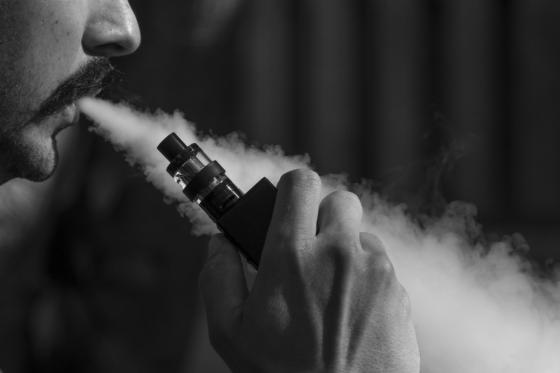Vaping
Vapes, vaping, e-cigs, e-hookahs, juuls, vape pens, pods, cuvies, stigs

The information on this page has been sourced from NSW Health and the National Drug and Alcohol Research Centre (NDARC).
E-cigarettes, or electronic cigarettes, are battery-operated devices that heat a liquid called 'e-liquid' into a vapour that users inhale. Inhaling this vapour is commonly referred to as 'vaping'.
E-cigarettes come in many shapes and sizes and can be made to look like everyday items including highlighters, pens or USB memory sticks. Vapour from e-cigarettes does not usually have a strong odour. E-cigarettes may have a sweet smell depending on the flavour.
E-liquid contains a range of chemicals and it may or may not contain nicotine.
Vaping and the law
On 1 July 2024 the Australian Government changed the laws around vapes.
Nicotine vapes in Australia are now regulated as therapeutic goods. This means they are only available at pharmacies to help people quit smoking or manage nicotine dependence.
Until 30 September 2024, everyone needs a prescription from a doctor or nurse practitioner to purchase therapeutic vapes from a pharmacy.
From 1 October 2024, people 18 years or over will be able to purchase nicotine vapes directly from a pharmacy without a prescription. People under 18 will still need a prescription to access vapes, where state and territory laws allow it, to ensure they get appropriate medical advice and supervision.
It is illegal for any other business, such as tobacconists, vape shops and convenience stores, to sell any type of vape or vape product.
Cannabis vapes are subject to separate strict regulations (see the Medicinal cannabis hub).
The Smoke-free Environment Act 2000 and the Passenger Transport (General) Regulation 2017 prohibit people from using e-cigarettes in smoke-free areas.
For more information see:
- Australian Government Therapeutic Goods Administration vaping hub
- NSW Health E-cigarettes
- NSW Health Enforcement of nicotine containing e-cigarette laws
Vaping and e-cigarettes statistics
The 2022–2023 National Drug Strategy Household Survey (NDSHS) reported that 1 in 5 (19.8%) people aged 14 and over in Australia reported having used e‑cigarettes at least once in their lifetime, with 7% currently using e‑cigarettes at least daily, weekly, monthly, or less often than monthly. This was a large increase from 2019, when only 11.3% of people had ever used e‑cigarettes, and 2.5% were currently using them. The proportion of people who used e‑cigarettes daily in 2022–2023 was 3.5%, rising from 1.1% in 2019.
The increase in e-cigarette use is most notable among young people, with 49% of people aged 18-24 reporting the use of an e-cigarette at least once in their lifetime, the highest of all age groups. In 2019, only 9.6% of people aged 14 to 17 in Australia had ever used e‑cigarettes; this percentage had nearly tripled by 2022–2023, to 28%.
Effects
E-cigarettes are not risk free. They may expose users and bystanders to chemicals and toxins such as propylene glycol, glycerol or ethylene glycol that cause adverse health effects, and may increase the risk of developing cardiovascular, cancer and respiratory diseases. E-liquids or vapour can also contain potentially harmful chemicals which are not present in smoke from tobacco cigarettes.
E-cigarettes are often labelled incorrectly and may contain high levels nicotine, even when they claim not to contain nicotine. Too much nicotine from e-cigarettes can cause nicotine poisoning.
For more information about the effects of vaping see the NSW Health E-cigarettes page.
Vaping and young people
Many vapes contain nicotine making them addictive. Most vapes with labels that claim to be nicotine free contain nicotine and a lot of other chemicals. Vapes can contain the same harmful chemicals found in cleaning products, nail polish remover, weed killer and bug spray.
Vapes can leave young people at increased risk of depression and anxiety.
Nicotine is a drug that is often in vapes and is highly addictive for young brains. It can cause long-lasting negative effects on brain development. Nicotine changes the way brain synapses are formed in young people. This can harm the ability of young people to pay attention and learn, and can affect mood and memory.
Young people who vape are 3 times more likely to take up smoking cigarettes. Vaping has been linked to lung disease.
Find out more
- NSW Heath The facts about vaping
- NSW Health Vaping information for young people
- NSW Health The facts about vaping for young people
- NSW Health Vaping information for parents and carers
- NSW Health The facts about vaping for parents and carers
- Australian Institute of Health and Welfare Young people's use of vapes and e-cigarettes
Getting help
Quitline
Call Quitline on 13 78 48 (13 QUIT) for information and advice about quitting, assessment of your nicotine dependence, strategies on preparing to quit and staying quit. They can also help you think of ways to approach a conversation with your child or loved one about vaping.
The Aboriginal Quitline is also available on 13 78 48 (13 QUIT). Run by Aboriginal Advisors, the Aboriginal Quitline is a telephone-based confidential advice and support service.
iCanQuit
For people who are attempting to quit tobacco and are considering using nicotine-free e-cigarettes, using nicotine replacement therapy products such as lozenges, gums, nasal sprays and patches may be a better option. The iCanQuit website provides information on quitting methods, links to support groups and top tips to help you choose the best method for you.
